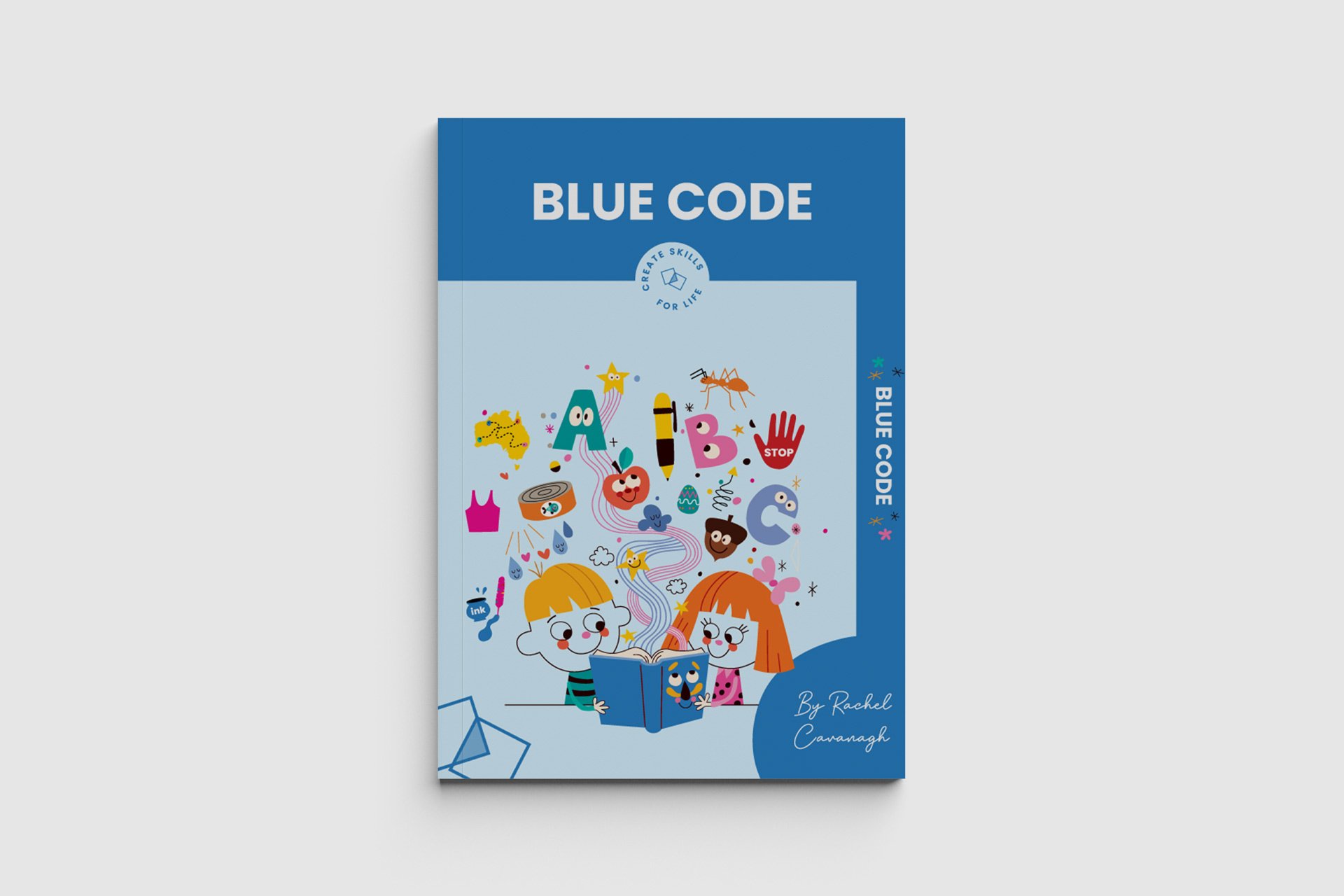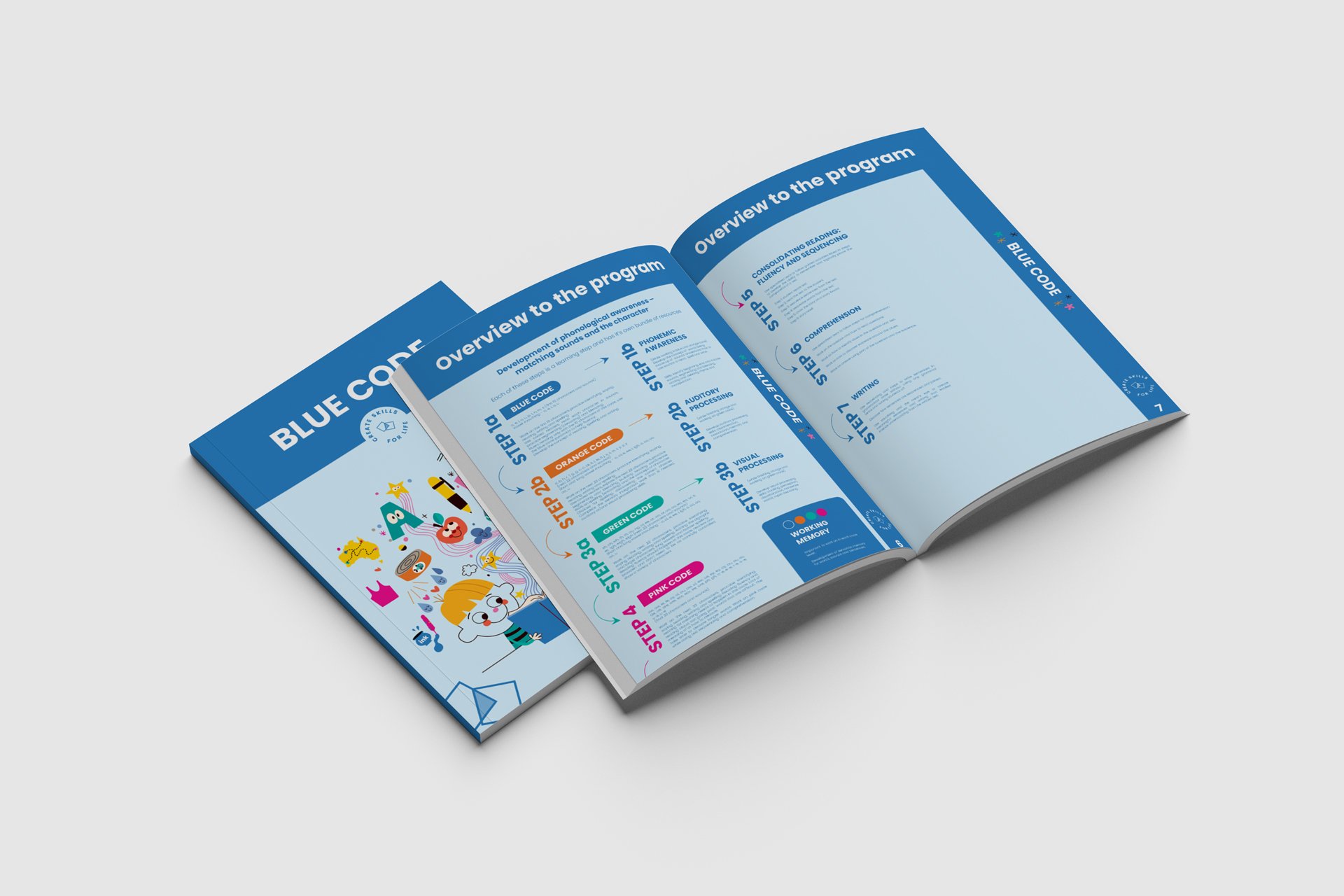 Image 1 of 2
Image 1 of 2

 Image 2 of 2
Image 2 of 2



Blue Code Bundle
The blue code bundle has been created as a set of tools to be used in the process of teaching the Create Skills For Life approach. It is a phonics approach which synthesises information from our senses and enables students to process it for reading. The bundle colours have been designed to split the 46 sounds of the English language into 4 manageable groups. Of the 250 spellings within the English language, 87 have been chosen and represented within the code bundles.
The blue code is the beginning and first code level of the Create Skills For Life approach. This code level includes the short vowel sounds and five other letter/sounds that are needed to begin and emerge as a reader, speller and writer. There are ten letters/sounds in total.
This is a specialised bundle of resources that support the development of fluency and early literacy skills. The bundle comprises an introduction to the Create Skills For Life approach, an overview to help contextualise resources within the whole set of resources, a how to guide to support the use of the resources in the bundle and finally there are a large number of practical resources to use while teaching. There is also a handy glossary of terms at the back of the bundle.
The resources are easy to print, can be laminated and reused, they are practical and hands on resources that are multi-sensory, varied and teach the code from a variety of contexts to suit the many ways learners interact and process language. There are a series of games at the end of the bundle to help make learning fun.
The blue code bundle has been created as a set of tools to be used in the process of teaching the Create Skills For Life approach. It is a phonics approach which synthesises information from our senses and enables students to process it for reading. The bundle colours have been designed to split the 46 sounds of the English language into 4 manageable groups. Of the 250 spellings within the English language, 87 have been chosen and represented within the code bundles.
The blue code is the beginning and first code level of the Create Skills For Life approach. This code level includes the short vowel sounds and five other letter/sounds that are needed to begin and emerge as a reader, speller and writer. There are ten letters/sounds in total.
This is a specialised bundle of resources that support the development of fluency and early literacy skills. The bundle comprises an introduction to the Create Skills For Life approach, an overview to help contextualise resources within the whole set of resources, a how to guide to support the use of the resources in the bundle and finally there are a large number of practical resources to use while teaching. There is also a handy glossary of terms at the back of the bundle.
The resources are easy to print, can be laminated and reused, they are practical and hands on resources that are multi-sensory, varied and teach the code from a variety of contexts to suit the many ways learners interact and process language. There are a series of games at the end of the bundle to help make learning fun.
The blue code bundle has been created as a set of tools to be used in the process of teaching the Create Skills For Life approach. It is a phonics approach which synthesises information from our senses and enables students to process it for reading. The bundle colours have been designed to split the 46 sounds of the English language into 4 manageable groups. Of the 250 spellings within the English language, 87 have been chosen and represented within the code bundles.
The blue code is the beginning and first code level of the Create Skills For Life approach. This code level includes the short vowel sounds and five other letter/sounds that are needed to begin and emerge as a reader, speller and writer. There are ten letters/sounds in total.
This is a specialised bundle of resources that support the development of fluency and early literacy skills. The bundle comprises an introduction to the Create Skills For Life approach, an overview to help contextualise resources within the whole set of resources, a how to guide to support the use of the resources in the bundle and finally there are a large number of practical resources to use while teaching. There is also a handy glossary of terms at the back of the bundle.
The resources are easy to print, can be laminated and reused, they are practical and hands on resources that are multi-sensory, varied and teach the code from a variety of contexts to suit the many ways learners interact and process language. There are a series of games at the end of the bundle to help make learning fun.
